The Sakya School of Tibetan Buddhism
- by Emily
- Last Updated: 2024-08-21
Sakya(ས་སྐྱ) in Tibetan means pale-white earth. The Sakya school is named after its ancestral monastery, Sakya Monastery, which is located on a hillside with grey-white rocks. It's also known as the Colorful Sect because the walls of its monasteries are painted with red, white, and black stripes symbolizing Manjushri, Avalokiteshvara, and Vajrapani. From the mid-13th century to the mid-14th century, the Sakyapa sect was closely associated with the Yuan Dynasty government and once became a representative of Tibetan local political power, implementing theocratic political system.
The Sakya Trizin has been passed down by the Khön family through generations. Before the founder of the Sakyapa school, Khön Könchok Gyalpo, the Khön family believed in and practiced the Nyingma school for generations. The Sakya sect permits monks to marry and have children; however, after having children, they are prohibited from approaching women. The lineage of teachings and leadership is typically hereditary so both religious and political power are concentrated within the Khön family.
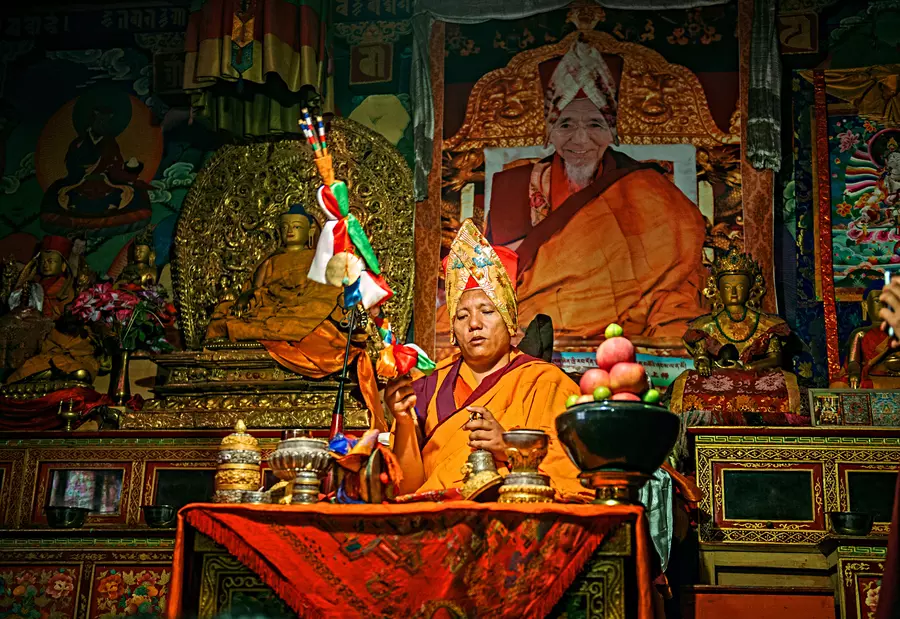
How to Tell?
A Sakya patriarch, in memory of his deceased master, shaved off the top of the hat and folded the ears back to the center. This kind of hat can only be worn by eminent monks. Sakya monks usually wear black caps with a rooster comb design, which is unique to the Sakya school. The ordinary Sakya monks are required to wear red vests. Decorative vests are only worn during ritual festivals.
Formation and Historical Development
The Sakya school was founded in the 11th century by Khön Könchok Gyalpo of the ancient Tibetan noble Khön family, who was a descendant of one of the "Seven Elders". Könchok Gyalpo initially studied Nyingma doctrines from his father and brothers and later learned the newly translated Tantra Way with Drogmi Shakya Yeshe. In 1073, he established Sakya Monastery in present-day Ponpori Hills in Sakya County, Tibet, from which the Sakyapa sect was named. Könchok Gyalpo became the leader of the sect and preached for 30 years. This school has always used Sakya Monastery as its main temple and teachings of "Path with its Result" as its primary tantric transmission.
Following Könchok Gyalpo, the leadership of the Sakya School was passed down through the Khön family, and notable "Five Venerable Supreme Masters" emerged:
Sachen Kunga Nyingpo (1092–1158), Sonam Tsemo (1142–1182), Jetsun Dragpa Gyaltsen (1147–1216), Sakya Pandita Kunga Gyeltsen (1182–1251), Drogön Chögyal Pagspa (1235–1280).
The fourth of the Five Sakya Forefathers, Sakya Pandita, is known for his scholarly achievements and knowledge of Sanskrit. He was the first to establish relations with the Yuan Dynasty. In 1247, Sakya Pandita negotiated with the Mongol prince Godan Khan in Liangzhou (present-day Wuwei, Gansu) and agreed upon the conditions for submission. Later, he wrote letters to various forces in Tibet in Liangzhou, persuading all forces in Tibet to submit to the Yuan Dynasty, and made important contributions to the Yuan Dynasty's unification of Tibet.
The fifth Sakya Forefather, Pagspa, was appointed as the first Imperial Preceptor of the Yuan dynasty by Kublai Khan and led the Bureau of Buddhist and Tibetan Affairs. Phagpa is best known for creating the "Phagpa script," an official script for the Mongol Empire. This script was based on the Tibetan alphabet but modified to suit the phonetic needs of Mongolians. Although it was widely used during the Yuan dynasty, the script fell out of use after the dynasty's fall.
For over a hundred years until the fall of the Yuan Dynasty in 1368, the Sakyapa school thrived and many Yuan Dynasty Imperial Preceptors came from the Sakya tradition. In Tibet, the position of Sakya Trizin was tightly controlled by the Khön family. Later, the branch of Kagyu school - Phagdru Kagyu in Shannan gained support from the Ming Dynasty, replacing the Sakya school's dominance. By the 13th Sakya Trizin, its influence was literally limited to managing Sakya Monastery and its affiliated lands and followers.
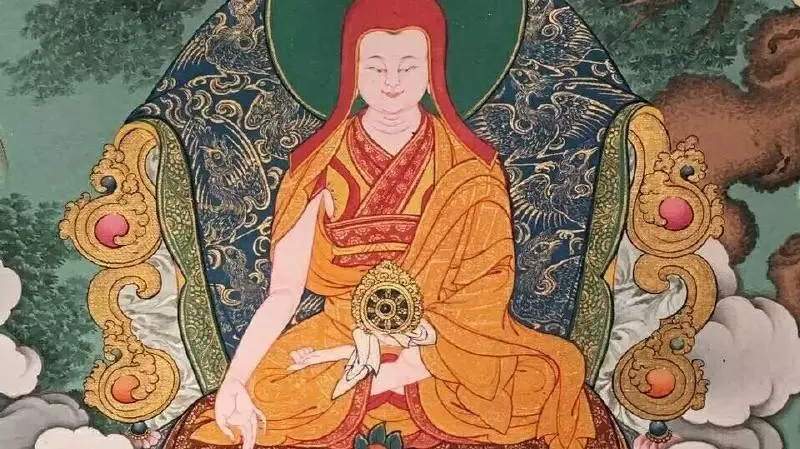
In the early 14th century, the Khön family was divided into four Podrangs (institutions handling political and religious affairs): Zhithog, Rinchen Gang, Lhakhang, and Ducho. The leadership of the Sakya throne rotated among these four Podrangs. By the mid-Ming Dynasty, three of these Podrangs ceased to pass down, leaving only the Ducho, which later split into 2 branches: Drolma Podrang and Phuntsok Podrang. The Sakya Trizin is now alternately appointed from the eldest sons of these two branches. The current Sakya Trizin is residing in the United States.
Teachings:
The core teaching of the Sakya school is the "Path with its Result" (Lamdre) doctrine, which primarily involves the sequential practices of the Hevajra tantra and its associated aspects, originally from Nagauna. According to the inheritance of the Nagauna sect, there are four stages in practicing the Lamdre method of the Sakya sect: Stream-enterer, Once-returner, Non-returner, and Arahant.
Stream-enterer
The first stage is to have "opened the eye of the Dharma". Recognizing that being human in this life is the result of good deeds in previous lives, practitioners should avoid non-meritorious actions (evil deeds) and focus on doing good to ensure a favorable rebirth. Individuals will not be reborn in any plane lower than the human (animal, preta, or in hell).
Once-returner
A once-returner is the next step up, and they have reduced sensual desire and ill-will even further. After abandoning non-meritorious actions, one still cannot get rid of the suffering of samsara and eliminate all troubles. The root of suffering is egocentrism, and eliminating it requires deep practice and the realization of the "Emptiness of all things". Thoughts connected with greed, hatred, and delusion do not arise often, and when they do, do not become obsessive.
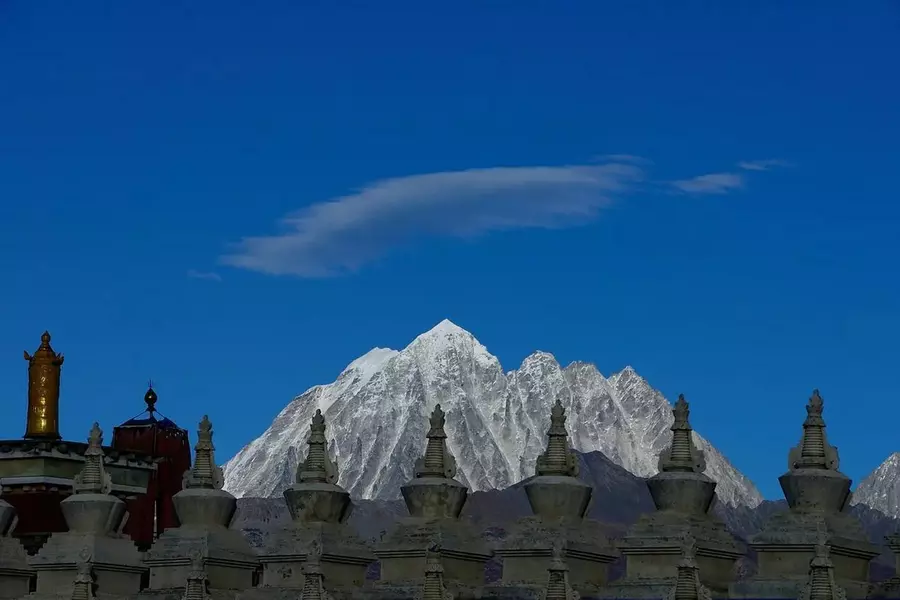
Non-returner
Non-returner has cut off the first five fetters that bind the ordinary mind. Practitioners must avoid both eternalism and nihilism. Eternalism leads to desire and the pursuit of material needs, while nihilism means viewing everything as empty, including thoughts, Nirvana, karma, and good and evil. The goal is to transcend both extremes and achieve the Middle Way, which leads to Nirvana. They are not reborn into the human world after death but into the heaven of the Pure Abodes, where they attain full enlightenment.
Arahant
It means a fully awakened person who has attained the highest state of spiritual enlightenment and liberation. An Arahant has reached Nirvana, the ultimate goal of liberation from samsara. They eradicate all troubles and mental impurities, including the last traces of desire, aversion, and ignorance. This means they have completely abandoned all ten fetters that bind beings to samsara.
Monasteries
During its peak, the Sakya school widely spread throughout the regions of Ü-Tsang, Kham, Amdo, and other vast Tibetan areas, as well as into Mongolia and Han Chinese regions. Many monasteries were established, including notable ones such as Sakya Monastery(Sakya, Tibet), Gonchen Monastery(Dege, Sichuan), Jiegu Monastery(Yushu, Qinghai) and Nalendra Monastery(Lhünzhub, Tibet).
Sakya Monastery
Located on the banks of the Zhongqu River in Sakya County, Tibet, it is the main monastery of the Sakyapa. Within the Zhongqu River Valley, there are two clusters of buildings. The ruins, known as the Northern Sakya Monastery, are the remains of the original Sakya Monastery founded by Könchok Gyalpo. In the wide river valley below the mountain lies the Southern Sakya Monastery, a temple surrounded by a square wall decorated with three colored stripes on a gray background.
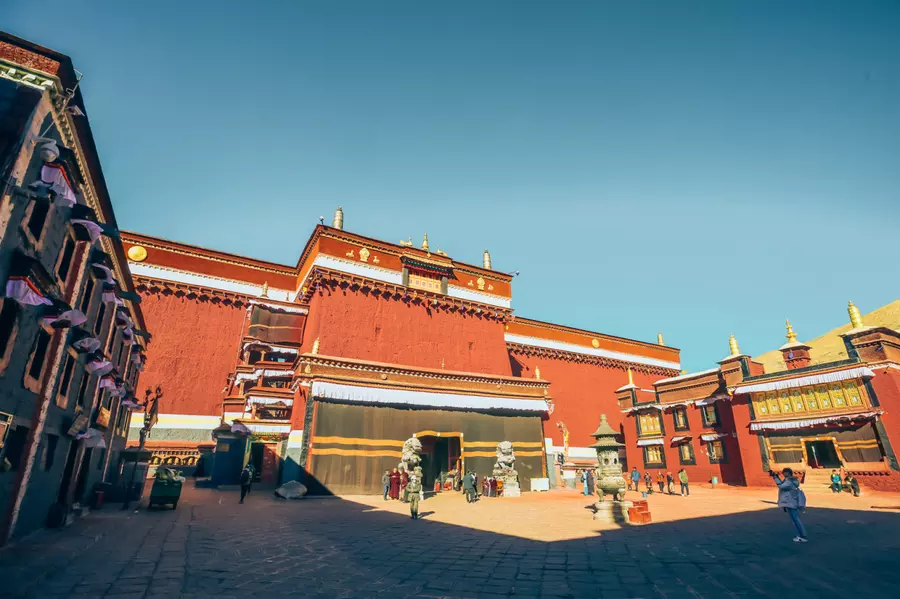
The Southern Sakya Monastery was established in 1268 AD under the orders of Drogön Chögyal Phagpa. Since the time of Phagpa, it has housed countless treasures related to the Sakyapa and various central governments throughout history. One of its highlight is the Lhakang Chenmo, also known as the Great Scripture Hall, which contains over 84,000 volumes of scriptures and a portion of palm-leaf manuscripts. Among them, more than 10,000 texts were meticulously written during Phagpa's time using gold, silver, cinnabar, and ink. The main hall also contains hundreds of Thangkas that document the history of Sakya's development, making them invaluable, so the monastery is often referred to as the "Second Dunhuang."
Gonchen Monastery
Also known as Lhundrubteng Monastery and Derge Monastery, the main Sakya Sect's monastery is located in Derge County, Sichuan. The monastery has traditionally been managed by the eldest son of the Derge chieftain, making it one of the chieftain's family temples.
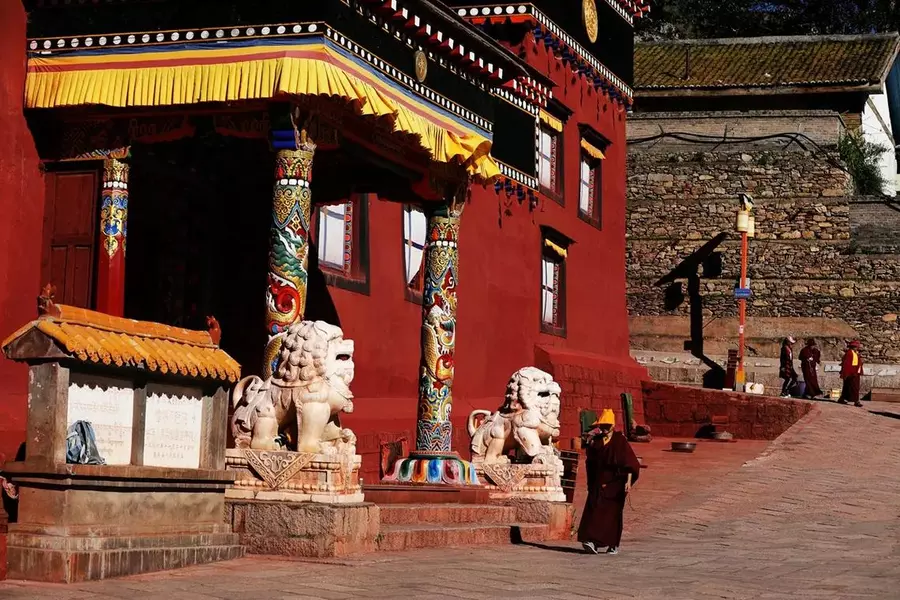
Below the monastery itself is the famous Derge Parkhang (Printing House), which houses about 217,000 engraved blocks of scriptures from all Tibetan Buddhist sects. It continues to use traditional handcraft techniques to print Buddhist scriptures, such as the Kangyur and the Tengyur. There are about 100 types of Buddhist scriptures with 15,000 blocks; 737 types of books on medicine, astronomy, literature, art, history, and general topics, with nearly 200,000 blocks; and over 150 types of Buddhist image plates. Many of these rare and unique editions attract significant attention and have been designated as key national cultural heritage sites by the State Council.
Conclusion
Since its establishment in 1073 by Könchok Gyalpo, the Sakya sect has preserved its unique traditions and inheritance through the Khön family. Its enduring legacy continues to influence and enrich Tibetan Buddhism, preserving a rich cultural heritage that is respected and revered not only in Tibet but globally.
Related Articles
- Gangkhar Puensum
- Tibet History
- Ganden Monastery
- Labrang Monastery
- Shigatse Attractions
- Drepung Monastery
- Pelkor Chode Monastery
- Sakya Monastery
- Nalendra Monastery
- Dorje Drak Monastery
Email response within 0.5~24 hours.


